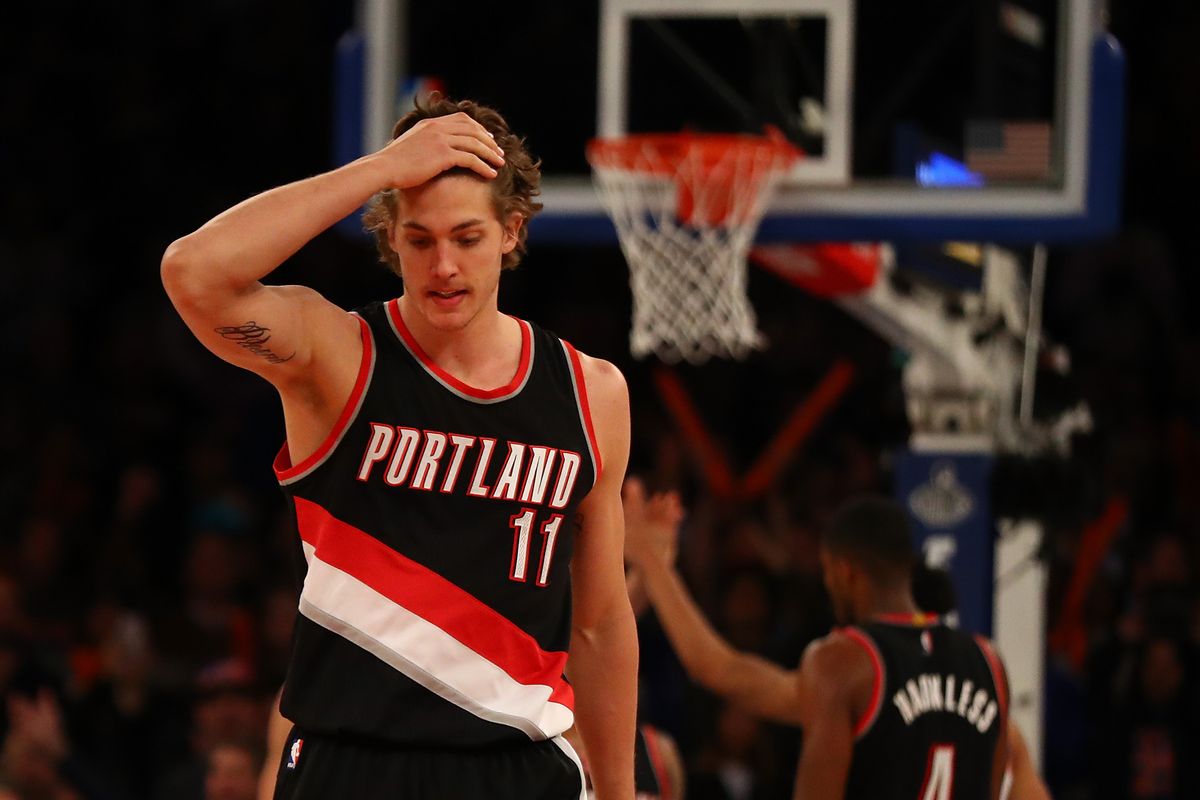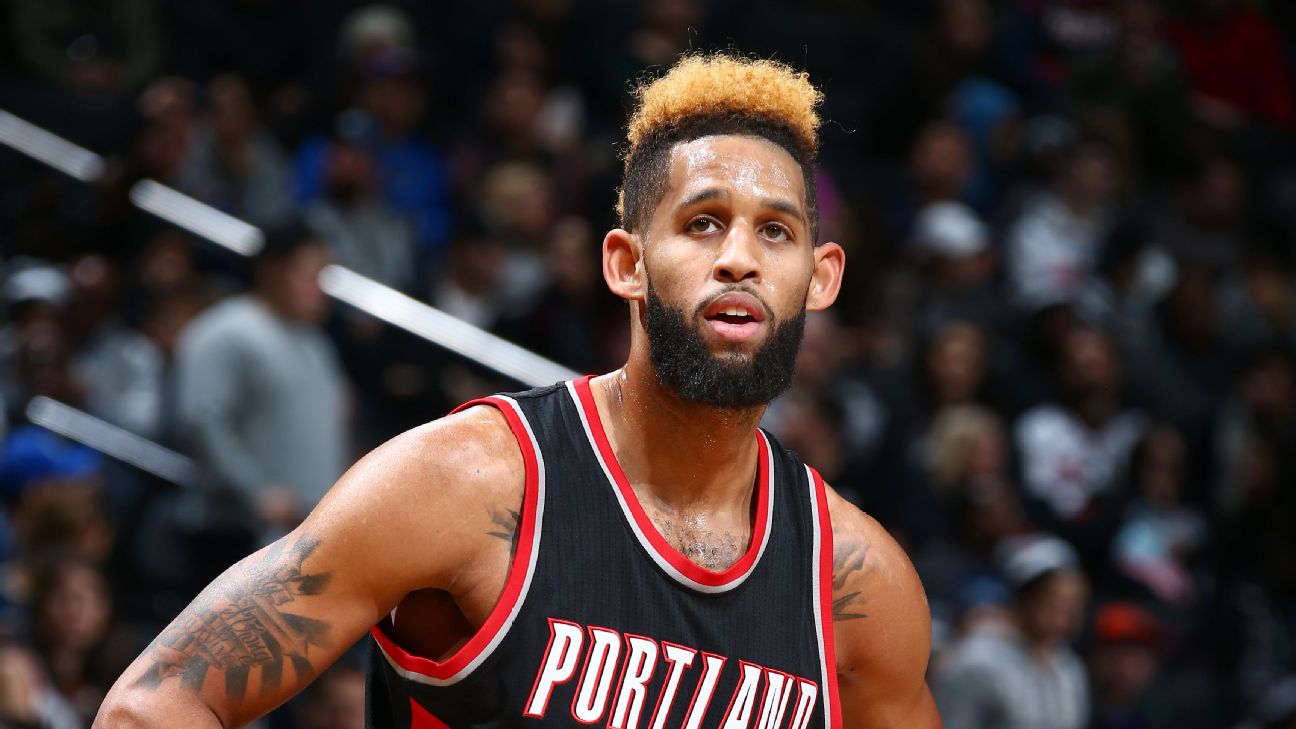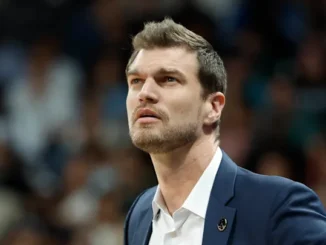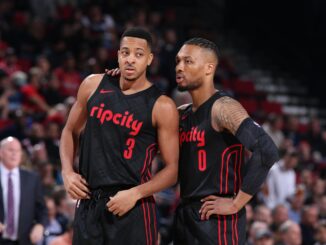
The Portland Trail Blazers’ 2016-17 season was a year defined by high ambitions and unmet expectations. The team saw a regression to the norm after shocking the league just a year prior, but there is plenty of talent on the roster that can help it improve.
Ahead of 2017-18, Oregon Sports News’ Jared Wright and Bryant Knox will be breaking down the strengths, weaknesses and recent showings from each and every Trail Blazers player. Today we take a look at a guy who’s shown promise at different times of his young career, yet has failed to live up to expectations entering his sixth season.
2016-17 Recap
| GP | GS | MPG | PPG | FG% | FT% | RPG | BPG | APG |
| 74 | 12 | 16.5 | 5.4 | .386 | .875 | 3.2 | 0.4 | 1.0 |
“I would say it was an up-and-down year for me, for sure.”
That quote, courtesy of Meyers Leonard (via The Oregonian) came during his 2016-17 exit interview. And if we’re being honest (and a bit polite), it’s favorable in comparison to the way things actually went down.
Despite starting in a career-high 12 games, Leonard’s points, rebounds, assists, minutes and three-point shooting all saw a decline. His field-goal percentage dropped as well to a career-worst 38.6 percent, which is a decrease of more than 10 percentage points from his four-year average entering 2015-16.
What we can take from this is that Leonard needs to find his niche. He’s not going to become a do-it-all big over the course of a summer, but he can find ways to play his role and play it efficiently.
For instance: His three-point percentage has now dropped for the third time in as many seasons. The Illinois product entered the Association touted as a floor-stretching big with 7’1” size, and he needs to rediscover that potential.
What He Brings To The Table
In spite of Leonard’s down numbers, he’s still unique in that he can run the floor and (theoretically) spread the court at 7’1”. The catch, however, is that he’s no longer as unique as he was even just five years ago as a rookie.
In today’s NBA, it’s become almost essential to have a stretch-5 or a big who does it all. Think Kristaps Porzingis. Joel Embiid. Giannis Antetokounmpo. Heck, even Kevin Durant found himself playing center during stretches in the NBA Finals.
Leonard won’t sniff unicorn status at this point in his career, which is why it’d be irresponsible to ask him to become a Swiss army knife over the course of a summer. But the good news is that he’s taking the right steps toward improvement in one very specific area.
If you’ve watched Leonard shoot, one thing that should stand out is his slow release. Damian Lillard and CJ McCollum are excellent playmakers and creators, but when Leonard ends up with an open look, it takes him too long to get off a comfortable shot.
According to NBA.com, 56.1 percent of his shots came from behind the three-point line, yet he knocked down just 34.9 percent of those attempts—the lowest of any range (split into eight-foot increments) on the court, with “heaves” being the only exception, where he went 0-for-1.
Part of this may be a system issue. Terry Stotts earns (and deserves) a lot of credit for his offense, but it’s possible he’s trying to shove a square peg into a round hole.
The problem with that theory is that we haven’t seen much else from Leonard to suggest he should be more involved in post-up or pick-and-roll offense.
That’s why it’s hugely positive that Leonard spent this summer working with a new trainer to improve his shot mechanics. If he can get to a spot where he’s thinking less about his form and instead reacting quickly, we could see a vastly improved player in 2017-18.
What To Expect in 2017-18
This is a make-or-break season for Leonard. He has three more guaranteed years on his deal, so no worries there as far as his camp is concerned. But the Blazers frontcourt continues to grow more and more crowded, making it less and less likely he sees significant minutes.
Entering the new season, it would have been bad enough if Leonard were competing with just last year’s incumbent. Al-Farouq Aminu, Jusuf Nurkic, Ed Davis and Noah Vonleh (and occasionally Maurice Harkless) were already going to put pressure on him. But now he also has two rookies in Zach Collins and Caleb Swanigan who have enhanced the fact that he has zero margin for error.
If Leonard does make the leap, it will look like better defense on the block and a more consistent shot from outside. And if that transformation takes place, it will force Terry Stotts to give him more run.
But if he doesn’t improve, he’s looking at falling out of the rotation altogether. If that ends up being the case, it’s unlikely he ever finds his way back in as long as he’s in Rip City.
CHECK OUT OTHER PLAYERS IN OUR ROSTER SERIES!



